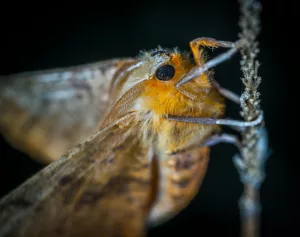Birdwatching and wildlife observation offer older adults a meaningful way to connect with the outdoors, providing both leisurely enjoyment and educational opportunities. By immersing themselves in nature, individuals can experience reduced stress levels and a heightened sense of mindfulness. Observing the behavior of birds and wildlife introduces an element of tranquility that promotes overall well-being.
Choosing the Right Location
To start your birdwatching or wildlife observation journey, selecting the appropriate location is crucial. Local parks, nature reserves, and bird sanctuaries can serve as excellent starting points. These spots often host a variety of bird species and other wildlife, providing a rich tapestry of behaviors and interactions to observe. Researching local hotspots can help you target specific species you want to see. Consider using online resources or local birdwatching apps to find locations that match your interests. For instance, some areas might be known for migratory birds, while others are habitats for rare or endangered species.
Exploring Local Parks and Reserves
Local parks are often easily accessible and provide diverse habitats. For example, the Highland Park in Pittsburgh is a haven for songbirds during the spring migration. When visiting such places, start your day early in the morning or late in the afternoon when birds are most active. Bring a map of the park to identify trails that lead to water bodies or open fields, as these are often hotspots for bird activity.
Discovering Bird Sanctuaries
Bird sanctuaries are specifically designed to protect avian species and their habitats. A visit to the John Heinz National Wildlife Refuge near Philadelphia offers the chance to see waterfowl, shorebirds, and even bald eagles. These sanctuaries often have visitor centers offering educational materials and guided tours, enhancing your understanding of the local ecosystem.
Seasonal Considerations
Different times of the year bring different opportunities. Spring and fall are prime times for observing migratory birds, while summer might offer the chance to see nesting behaviors. Winter may reveal different species altogether, like waterfowl or birds of prey. Planning your visits based on seasons can enhance your experience and increase the chances of seeing a diverse array of wildlife.
Tracking Migratory Patterns
Migratory patterns can vary significantly, providing unique opportunities each season. For example, the annual migration of sandhill cranes through Nebraska’s Platte River in March is a spectacle worth planning for. Observing such migrations requires some research—check local birdwatching reports or use apps like BirdCast to predict peak migration times.
Investing in Binoculars and Field Guides
Having the right equipment can greatly enhance your birdwatching adventure. Investing in a pair of quality binoculars is often the first step. Look for binoculars with a magnification of 8×42, which provides a good balance between power and field of view. Lightweight models with good grip are ideal for extended use, especially for older adults who may experience fatigue more quickly.
Tips for Choosing Binoculars
When shopping for binoculars, consider visiting a store to test several pairs. Pay attention to the weight and comfort of the binoculars in your hands. Some stores offer field testing, allowing you to try them outdoors. Consider brands like Nikon, Vortex, or Zeiss, known for their durability and clarity.
Choosing the Right Field Guides
Field guides are invaluable for identifying species and understanding more about their behaviors and habitats. Consider guides that are specific to your region, as they will provide more relevant information. Some guides are even available as mobile apps, offering features like bird calls and the ability to log sightings. Comparing different types of guides—like photographic versus illustrated versions—can help you decide which suits your style of learning best.
Popular Field Guides and Apps
For those who prefer physical books, “The Sibley Guide to Birds” is a comprehensive and beautifully illustrated option. If you lean towards digital tools, apps like Merlin Bird ID not only help with identification but also allow you to explore bird songs and calls, adding an auditory dimension to your experience.
Joining Birdwatching Groups or Clubs
For those looking to enhance their experience and meet new friends, joining a birdwatching group or club can be highly rewarding. These groups often organize outings to various locations, providing both social interaction and learning opportunities. Birdwatching clubs often hold workshops that cover topics such as bird identification, conservation efforts, and photography.
Finding the Right Group
Local Audubon Society chapters are a great place to start when looking for birdwatching groups. These organizations offer regular events and are welcoming to beginners. Alternatively, websites like Meetup or Facebook Groups can connect you with birdwatchers in your area and provide updates on upcoming events.
Sharing Knowledge and Experiences
Engaging with a community of birdwatchers allows for the sharing of tips, insights, and experiences. For instance, a fellow birdwatcher might share a lesser-known location where a rare species was recently spotted, or offer advice on distinguishing similar-looking birds. Such exchanges enrich the overall experience and foster a sense of community.
Organizing Birdwatching Events
Consider organizing your own birdwatching outing, inviting friends or family to join. This can be as simple as a morning walk in a local park or a planned trip to a nearby nature reserve. Sharing your passion can introduce others to the joy of birdwatching.
Maintaining a Field Journal
A field journal is a personal record of your observations, providing a way to reflect on and learn from your experiences. Recording the time, location, weather conditions, and species observed can help track patterns and changes over time. This practice not only enhances memory but also contributes to a greater understanding of seasonal and environmental impacts on wildlife.
Tips for Effective Journaling
Start each entry with the date, time, and location. Note the weather conditions and any significant environmental details, such as the presence of water or specific plant species. Use sketches or photographs to complement your notes, capturing key features of the birds you observe.
Reflecting on Observations
Regularly reviewing your journal entries can reveal unexpected trends or behaviors. For example, you might notice that certain species appear at the same location each year during migration. These insights can deepen your appreciation for the natural world and enhance future birdwatching outings.
Analyzing Patterns
Look for patterns in your observations, such as changes in bird populations or the timing of migrations. Sharing these insights with local conservation groups can contribute to broader understanding and research efforts.
Learning About Conservation
Birdwatching often leads to a deeper understanding of and concern for conservation issues. Educating yourself about the threats facing birds and wildlife, such as habitat loss or climate change, can inspire advocacy and conservation efforts. Many birdwatching groups participate in citizen science projects, where your observations can contribute to real-world data collection and conservation research.
Participating in Citizen Science
Projects like the Great Backyard Bird Count or the Christmas Bird Count offer opportunities to contribute to science while enjoying your hobby. These initiatives collect data that helps track bird populations and inform conservation strategies.
Supporting Conservation Initiatives
Consider supporting local conservation initiatives, whether through volunteering, donations, or simply spreading awareness. Participating in clean-up events or habitat restoration projects can provide a direct impact on the environment. By becoming involved, you help ensure that future generations can enjoy the same natural wonders.
Getting Involved Locally
Contact local environmental organizations to learn about volunteer opportunities. Many groups need help with trail maintenance, habitat restoration, or educational programs. Your involvement can make a tangible difference in preserving natural habitats.
Embracing the Joy of Discovery
Birdwatching and wildlife observation offer a unique blend of excitement and serenity. The unpredictability of wildlife encounters can evoke a sense of wonder and curiosity. Whether you’re witnessing the acrobatics of a swallow in flight or the elusive behavior of a nocturnal owl, each sighting is a reminder of the beauty and complexity of nature.
Celebrating Unique Sightings
Create a “life list” of birds you hope to see, celebrating each new species you encounter. Share your excitement with fellow birdwatchers, as these moments create lasting memories and foster a deeper connection to the natural world.
Cultivating Mindfulness and Presence
Engaging in these activities naturally fosters mindfulness. The act of quietly observing teaches patience and presence, allowing you to fully immerse yourself in the moment. This practice not only enhances the birdwatching experience but also contributes to overall mental health and well-being.
Practicing Mindfulness Techniques
During your birdwatching outings, take moments to pause and focus on your breathing. Use all your senses to experience the environment fully. Listen to the symphony of bird calls, feel the breeze, and observe the play of light and shadow on the landscape.
Preparing for Birdwatching Outings
Preparation can significantly enhance your birdwatching trips. Dressing appropriately for the weather ensures comfort and safety. Layering is key, as temperatures can change throughout the day. Comfortable footwear is also important, especially if you’ll be walking on uneven terrain.
Packing Essentials
Besides binoculars and field guides, consider packing a small backpack with essentials like water, snacks, a hat, sunscreen, and a first-aid kit. A lightweight folding chair can be a great addition for those who prefer to sit and observe quietly. Having a camera or smartphone can also allow you to document your sightings visually.
Using Technology to Enhance Birdwatching
Technology can be a useful companion in birdwatching. Birdwatching apps can help identify species by sound and sight, log sightings, and provide information about nearby hotspots. Social media platforms and online forums offer a space to share your experiences and learn from others.
Exploring Birdwatching Apps
Apps like Merlin Bird ID or eBird offer robust features that can enhance your outings. Merlin Bird ID, for instance, can help identify birds based on a few simple questions or even a photo, while eBird allows you to contribute your sightings to a global database used by researchers around the world.
Common Mistakes and How to Avoid Them
Even experienced birdwatchers can make mistakes. One common error is moving too quickly, which can disturb wildlife and result in missed sightings. Practicing patience and stillness can lead to more rewarding observations. Another mistake is neglecting to check the weather forecast, which can lead to uncomfortable or unsafe conditions.
Avoiding Disturbance
To minimize disturbance, move slowly and quietly. Use natural cover, like trees or shrubs, to blend into the environment. Avoid wearing bright colors that might startle wildlife, opting instead for neutral tones.
Minimizing Environmental Impact
Respecting wildlife and their habitats is essential. Avoid venturing off marked trails to prevent damaging sensitive ecosystems. Keep a respectful distance from wildlife to avoid causing stress or altering their natural behaviors. By following these guidelines, you ensure that your presence has minimal impact on the environment.
Practicing Leave No Trace
Adopt the Leave No Trace principles when birdwatching. This includes packing out all trash, respecting wildlife, and minimizing campfire impacts. By doing so, you help preserve the beauty and integrity of natural areas for future visitors.
Birdwatching and wildlife observation offer older adults a fulfilling way to engage with nature, providing both relaxation and learning opportunities. By choosing the right locations, investing in the necessary tools, and connecting with a community of enthusiasts, you can deepen your appreciation for the natural world. Embrace the journey with curiosity and mindfulness, and let each outing remind you of the beauty and complexity of life. As you continue to explore, you may find that the lessons learned and the joy discovered in these activities extend far beyond the trails and sanctuaries where they began.



